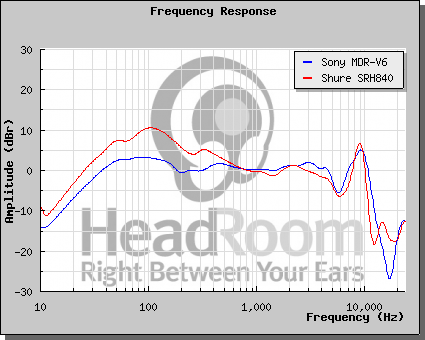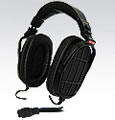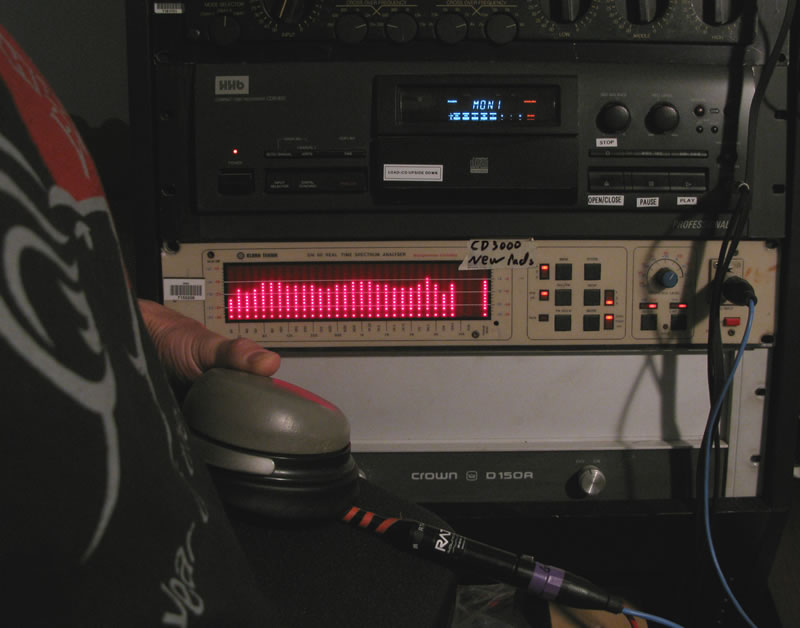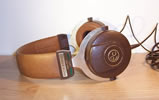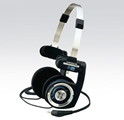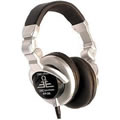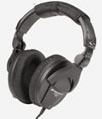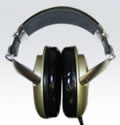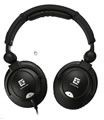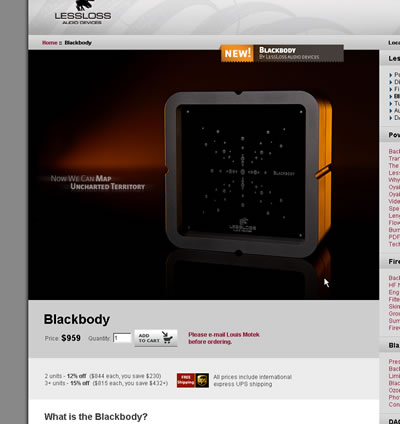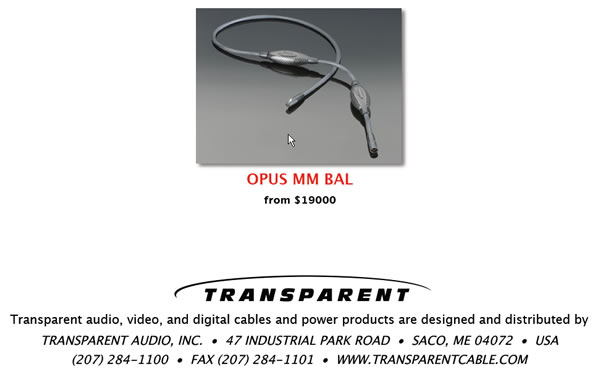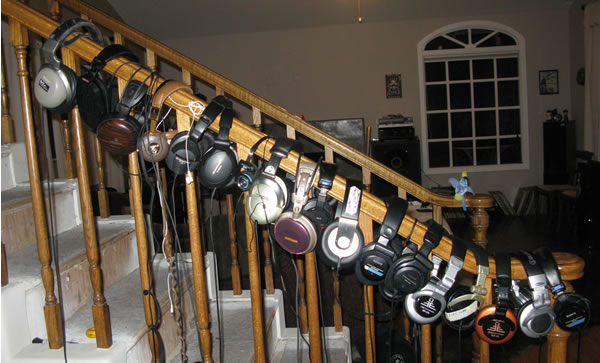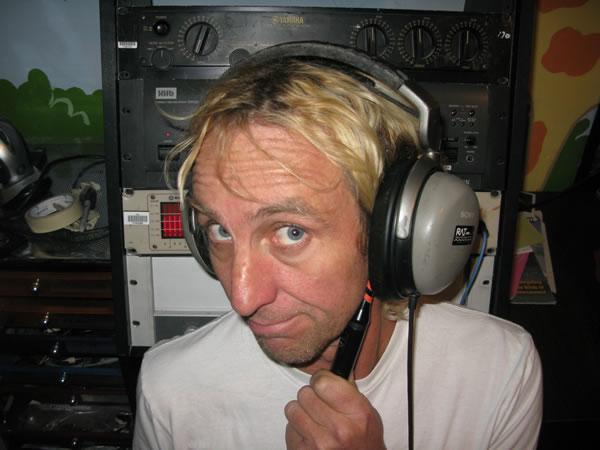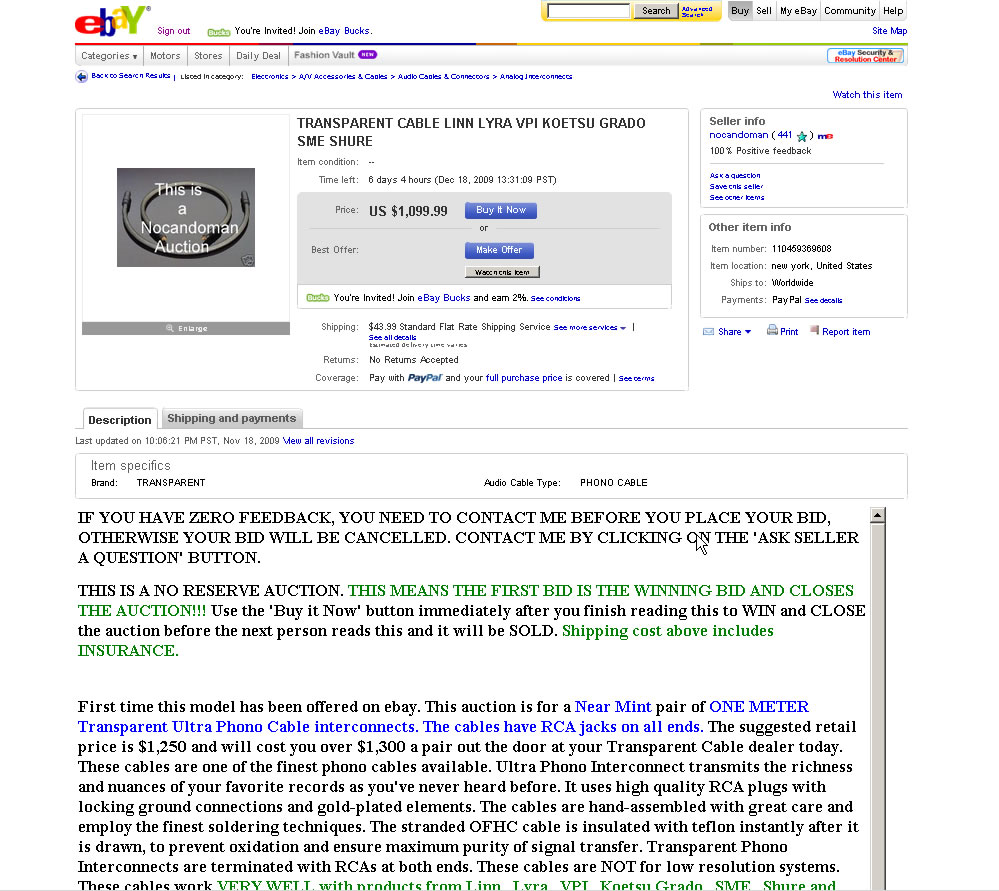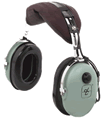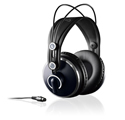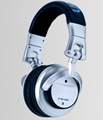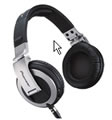The Mighty Headphone Quest Part 6
Finally we are actually seeing something show up with some potential! As I go through them, one thing keeps coming to mind. How in the heck can all these headphones have these amazing specifications of 20 to 20K, 5 to 30K, 6 to 42K with each one inferring that it is flatter, wider and more accurate than the last when there is almost no relationship whatsoever in the way they sound? Without a +- db spec and some hint as the the measurement methods, those numbers are junk. The state of these audio specifications is so pathetic and deceptive that they are all but useless. I guess that is a subject to address at some future bloggery date.
Ok, so why do we want a flat response from the headphones anyway? And what is flat? Where do we measure flat? Though the frequency responses of these headphones are all over the map I am seeing some potential trends with both bass boost and double dip high frequency responses. Perhaps some manufacturers are imbedding a Fletcher-Munson response, the new standard ISO 226:2003 equal loudness contours or some other form of compensation?
Perhaps it is arbitrary or there is a lot of heavy thinking is going on? Well, well actually there are plenty of mind clustery debates about how to massage the response of headphones to be perceived in certain ways and sound in some form of corrected correct by ears in comparison to some other form of whatever. My friend Ferrit sent me this article which goes into some deep Stereophile depth of some of the whatevers they are trying to figure out. To get a taste of some of that take a gander at this:
http://www.stereophile.com/features/808head/index.html
Ha!, well I am sure that discussion can and will go on forever and never have a definitive winner of rightness, so lets take a slightly different approach and try and keep this a simple, repeatable practical path to a productive outcome.
I set out on this bloggery quest to find some currently manufactured headphones that are close to as accurate, loud and fidelic as the Sony CD3000's I have relied upon for the past decade or so, before they irreparably die. What I did not know when I started the testing is that when I run pink noise and place a measurement mic near my ear inside the CD3000 headphones, that I would see a response that is much flatter than many of the other headphones I am testing. Wow, that is so cool and makes things much easier as I have a simple logical starting point that makes a bit of logical sense.
Another really interesting aspect is that other highly regarded and popular live headphones such as the Sony MDR-V6, Sony MDR-7506, Denon AH D2000, Beyer 770, and Sennheiser HD280 would also measure much flatter responses than many of the headphones that are less favored by live engineers. So it appears that coincidentally many live engineers are naturally attracted to headphones with a response that shows up as relatively flat on my simple measurement method. Or perhaps, just perhaps, it is not a coincidence and the headphones that put out a fairly flat 'equal energy per octave' response are truly a useful reference point for live engineers while headphones with tailored responses are less than optimum.
So armed with the observations that popular live headphones show up fairly flat with my overly simple measurement system, I continue to listen and measure and narrow the field and bang out the rest that I have, first the sad goodbye's:
Oooh, the Grado SR60's are lower line Grado but since they are all open ear and these are the most popular of the line, I bought these just to hear them. They actually do sound quite nice and pretty much like you see below, smooth, a bit top heavy and not much in the sub lows.


May as well dump my old broken MDR 90's or whatever they are. Oooh, they look good and actually beat the spec but are discontinued, are on the ear types, look like tiny little toy headphones and wont get near loud enough to clear the next round. That said, it was sort of cool to find that that flat is not a pipe dream.

Here is my least favorite of the cans that almost meet the +- 4db 30hz to 12.5K spec. If it was not for the dips at 6.3 and 10K, they would make it at least looks wise. These Sony MDR-V600's show up pretty good but do not sound that great. Harsh top end and sub low weak. I am going to drop them as they are not quite up to par sound wise with the V6 and 7506's cans which I am also going to drop. We are not looking at re discovering the average run of the mill utility cans, we want something better.

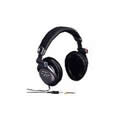
The Sennheiser MD280's actually showed up better than the Sennheiser MD380's. The sub low on the 380's was more impressive but I really want to hear that smooth midrange. These do fall off a bit in the low mid, and the top end is a few db too much to the dark to make the spec. I have never owned these personally but, based what I see and hear their popularity with live engineers does make sense. But, again, going to drop them, looking for better.

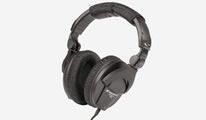
These Equation Audio RP 21's were a pleasant surprise, never heard of them before this test. Yes, bass heavy and they have that spike up top, a bit out of spec but perhaps another option for something with more ULF and UHF than V6's in the $100 street price range that have a removable cable as well.


And now we step up to the true hot shot finalists, now we are talking! Check out these Beyer DT770 (not 770M yet as they are on their way still). They do have a bit of a rounding hump with 1K in the center that just barley puts them outside of the spec at we set at 10K. To be honest, I would like see more low end push and less HF droop, but oooh, can you say "nice cans!"


Take those Beyer's and bump the comfort level up a full notch, add in a the absolute most bad ass cable I have ever seen on headphones and you have these gorgeous Denon home Hi-Fi units. I still have some volume testing to do and yes, they do drop out of our spec at 1.6K due to the solid low end bump from the 50mm drivers that gives the D2000's a bit of that smiley curve home Hi-Fi sound. Ideally they would be a bit more edgy but these are really nice, well built and solid.


And now out of the 29 headphones I have spent the last month or so and maybe a hundred hours testing I have come across some that actually meet the huge gaping hole of sloppy loose +- 4 db from 30hz to 12.5K spec I set long before I knew how challenged the contenders would be. Really? Plus/minus 4db? Think about it, 10 db is twice as loud so our spec says that no frequency can be close to twice as loud as an other frequency. Anyway, these Ultrasone HFI-680 and HFI-780 headphones made it. Imagine my glee after all the time spent to actually have something that not only did not fail what seemed to be such an achievable goal but actually beats it by grabbing 25HZ as well..

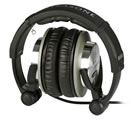
And they do sound really good. Would love to see a removable cable, with a straight or coily option. P. S. I hate the coily headphone cables! Break away straight cables that unplug when you step on them are the way to go IMHO). Also of note is that these have offset drivers that do not shoot sound directly down your ear canal. They say in the literature that this is less intrusive to our beloved ears longevity. These babies sound tight, smooth, full range, and were the 'aaaah, I am not crazy' entrants that have made this worthwhile.
Note: I did an edit here. I originally postsed the HFI 780's a second time in error.
Here is the CD3000 reference pair read out I am seeking to match or beat. Going back to them they do sound a ULF light now that I have the new exposures. The slightly thicker sound of the 680'sand 780's is welcomed though the CD3000's still sound more natural though a bit pushed high end wise now.

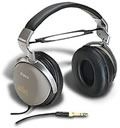
And while we are at it, I am going to drop the Sony MDR V6 and MDR 7506's from the running.



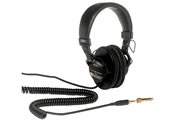
Though the Mighty Headphone Test is not done yet, these Ultrasone's have scored high enough to make the Dave Rat Recommends list. Plus I am impressed enough that maybe I should have Rat buy a pile of each and put together bloggery sale of them? What do ya think, anyone interested in a Mighty Top Dog Headphone Sale?
| Model | Disqualifier | Listening notes | Comments | Status |
| AKG 271 MKII | Not Arrived | Still Waiting Arrival | ||
| Allen & Heath XONE XD-53 | Not Arrived | Still Waiting Arrival | ||
| Beyer DT770 | Not Arrived | ULF-, UHF+ | Tonally Close | |
| Denon AH-D2000 | None yet | HF- | Tonally Close | |
| Voice optimized | ||||
| Bye Bye, open ear | ||||
| Speech optimized | ||||
| Sennheiser HD 25-1 II | On ear | Still Waiting Arrival | ||
| Sony MDR-CD3000 | Discontinued | Ref | Ref | |
| Low heavy | ||||
| Ultrasone HFI-680 | None yet | Smooth | Tonally Close | |
| Ultrasone HFI-780 | Response | UL+, H- | Tonally Close | |
Next blog up, I am going to hit the top level units with some juice and see how they handle being on the back end of a power amp, bypassing those resistors they put on headphone outputs. This will allow us a look at the effect of the headphone resistor on the response, if any and I hopefully will be able to find any weaknesses in power handling.
Rock on and Happy Holidays!
Dave Rat

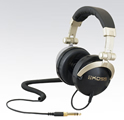

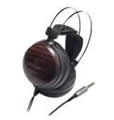

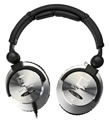
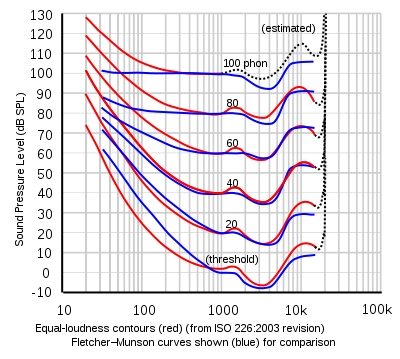

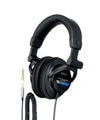

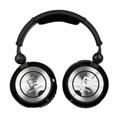
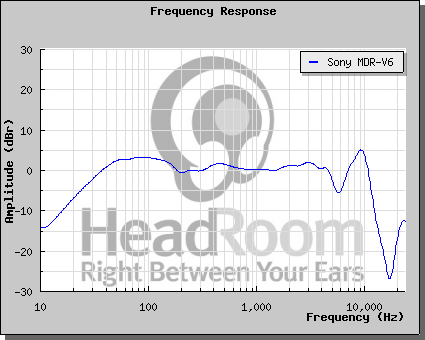
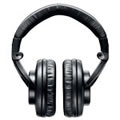 Unfortunately though, the Shure 840 demo ended before I figured out the analyzer snapshot idea and I had already sent the headphones back. But I did get a good amount of time listening to them. So, sorry about no RTA photo but I do have a read out from
Unfortunately though, the Shure 840 demo ended before I figured out the analyzer snapshot idea and I had already sent the headphones back. But I did get a good amount of time listening to them. So, sorry about no RTA photo but I do have a read out from 